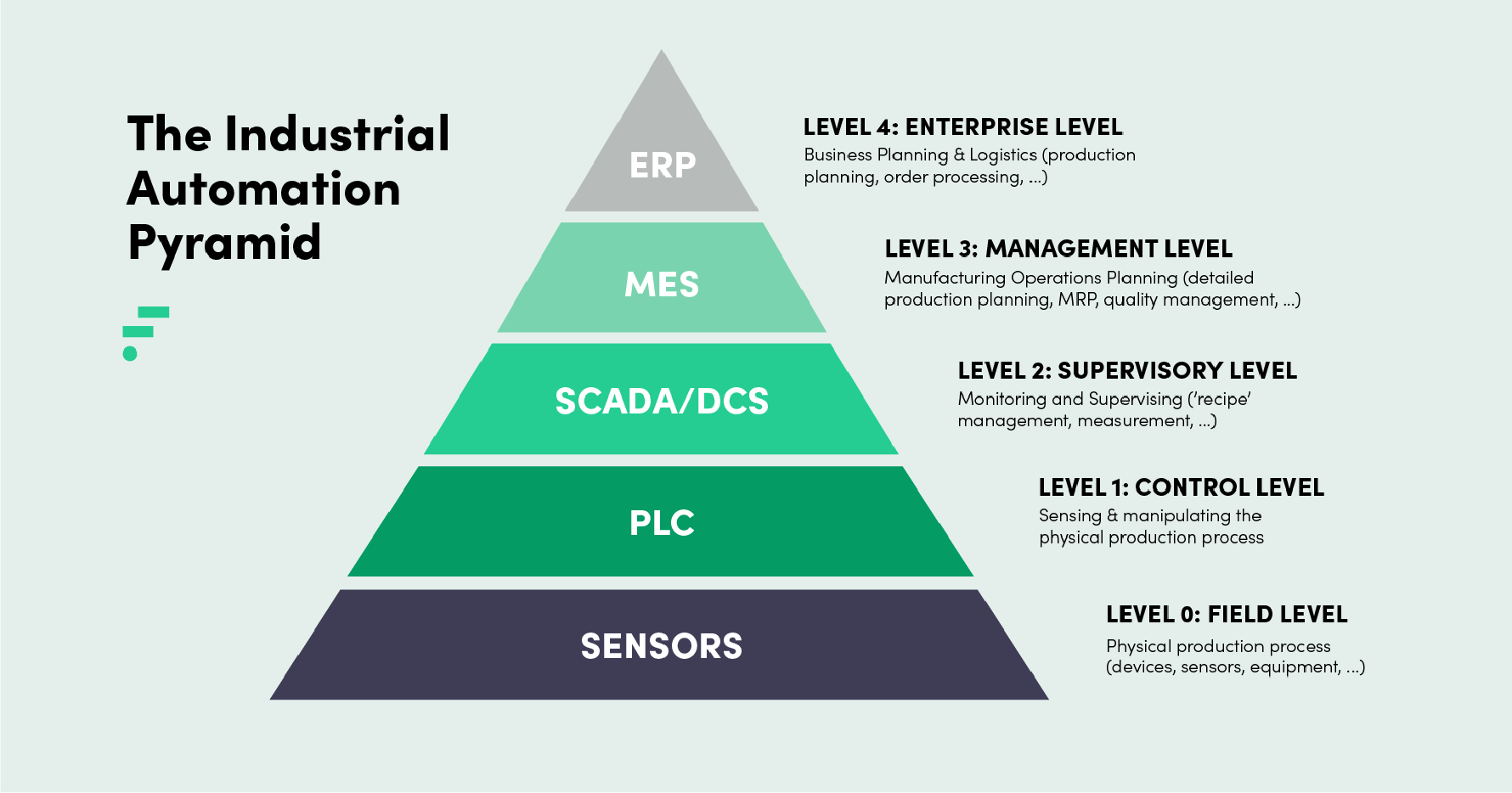Related story
How MES and ERP work together to support digital transformation in Industry 4.0
Yves Bourgeois on , updated
As a plant or operations manager, you may know your company’s production processes inside and out. But are you as familiar with MES & ERP, the two software systems that run your company’s operations in the background? Never again confuse the one acronym with the other in a company meeting. The core differences between MES and ERP explained.

Both ERP and MES play a crucial role in the process of digital transformation, which in Industry 4.0 is key for improving efficiency, delivery reliability and profitability.
Several systems are used to help progress this transformation – MES and ERP particularly being two of the most commonly used in manufacturing.
Both systems are often confused with each other. However, they play a very different role and are therefore quite different in their functionality.
Let’s take a look at the main differences between MES & ERP:
And you won’t ever get them mixed up again in a company meeting.
An ERP or Enterprise Resource Planning system is a set of integrated applications used to manage day-to-day operations in many different business departments such as planning, purchasing, accounting, finance, HR and sales.
ERP allows the organisation to automate key business processes, gain greater visibility into financials and mission-critical operations, and to manage resources through a single platform. It’s the digital brain of your business.
C-level reporting plays a crucial role in ERP, in which popular tools such as Tableau or Power BI are often integrated. Reports are generated over a certain period of time to follow-up on big numbers and to unravel new insights.
Questions that ERP can answer are for example: how many products were made in the last quarter? How much does it cost to produce a specific product? How many products were made with how many materials?

Financial reporting and business forecasting play a crucial role in ERP
Whereas ERP was once reserved only for the happy few, it has become more affordable, accessible and a crucial part of any manufacturing company. As ERP is not directly related to the production process itself, plant managers, process managers or operators often won’t use it.
However, integrating ERP with MES has the potential to also change their lives on the shop floor.
A Manufacturing Execution System (MES) is a software solution designed to monitor industrial production processes from raw materials to finished goods. It allows an organisation to get a full picture of how the factory floor is performing in real-time, in order to make manufacturing operations more efficient, improve quality and increase production output with less scrap.
An MES platform is mainly used by people who are involved in production, going from plant managers to process engineers and operators.
Plant managers use MES software to …
Machine operators use MES software to …
An MES can have many vital functions, going from data collection to production scheduling, resource management and performance analysis. All these core functions can be combined in a single platform, built on top of a data historian. Since MES can cover a broad range of capabilities and no company is the same, it’s unlikely to find any two solutions with a fully matching scope of functionality.

When deciding on MES functionality, there is a lid for every pot.
Whereas ERP knows the ‘why’ of things, MES knows the ‘how to’. While the former primarily supports business decisions, the latter supports the operational ones. Management executives need quick numbers, plant managers love digging into details. MES systems therefore provide real-time and detailed insights into floor operations, often through 1000s of sensors.

While ERP is on Level 4, MES is on Level 3 of the Industrial Automation Pyramid
ERP software focuses on integrating business processes and synchronising reporting across departments. Data is displayed over a period of time, often with a certain latency. ERP is mostly used by people in business outfits and requires some training in order to make it your own.
MES software lands on the other side of the moon. It is used on the factory floor and focuses on optimising the manufacturing process itself. MES provides visibility, information and detailed metrics of manufacturing operations in real-time, simplifying the workflow of machine operators.
| ERP | MES |
|---|---|
| Business intelligence & reporting | Track & trace products & batches |
| Order processing & fulfillment | Guide the workflow of operators |
| Inventory management | Real-time production monitoring |
| Customer relation management | Automated waste registration |
| Supply chain management | Analyse production bottlenecks |
| Customer management | Finding reasons for downtime |
| Human resources management | Product quality optimisation |
| Marketing & sales | Schedule specific products |
ERP and MES solutions have a lot of crossovers between them in how they track the production process. However, manufacturing companies in Industry 4.0 need a blend of the two systems to make the plant run at its maximum performance and present accurate information for decision-makers.
